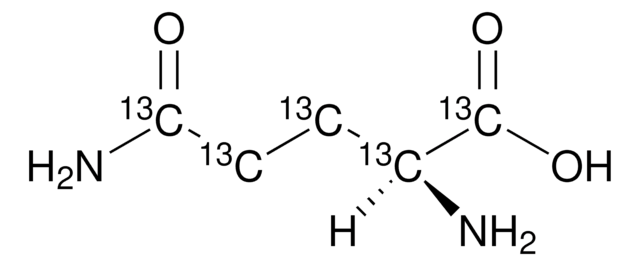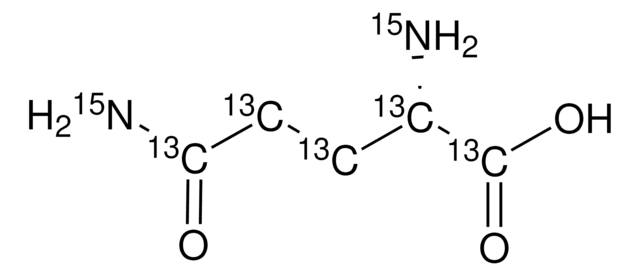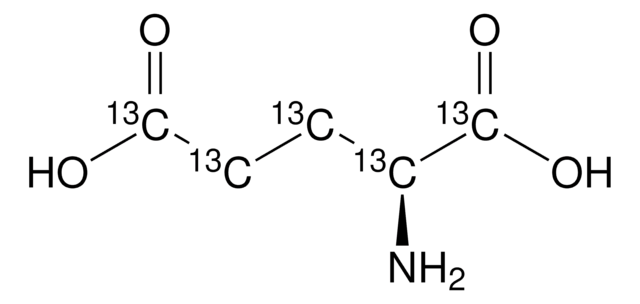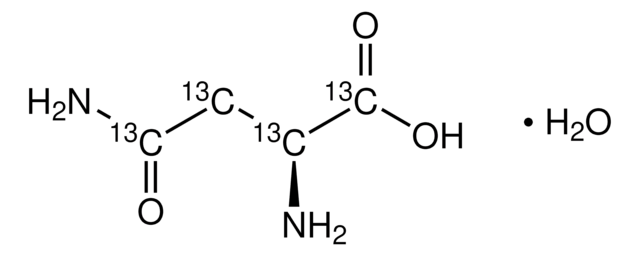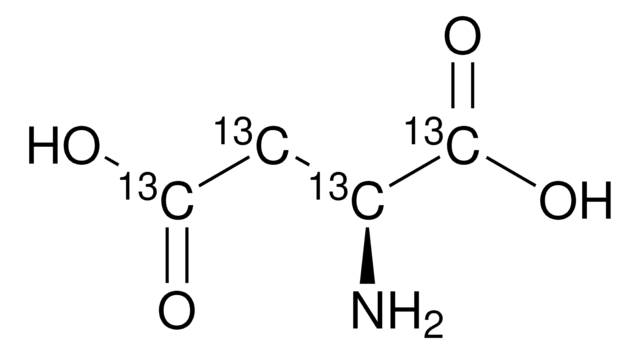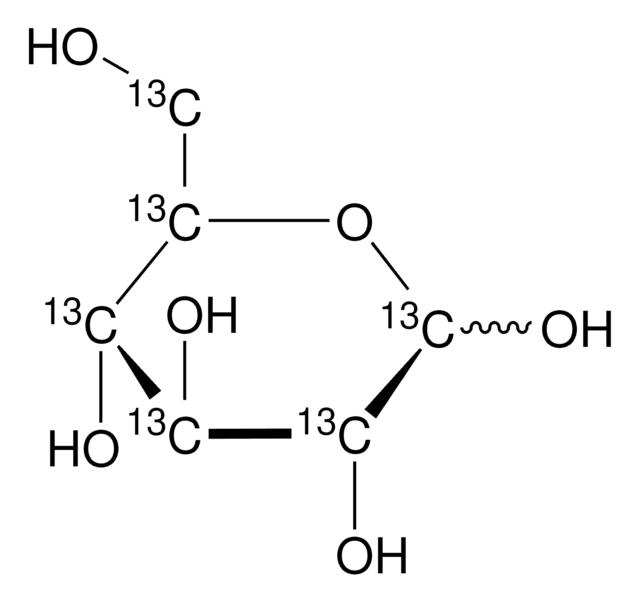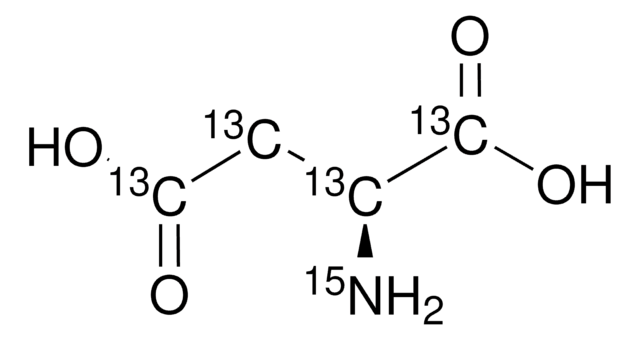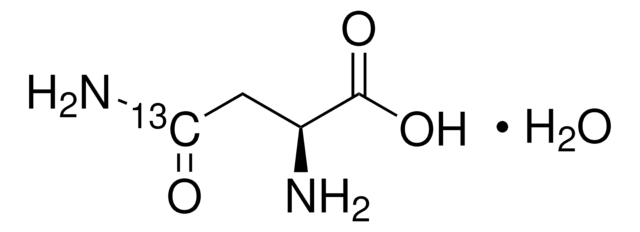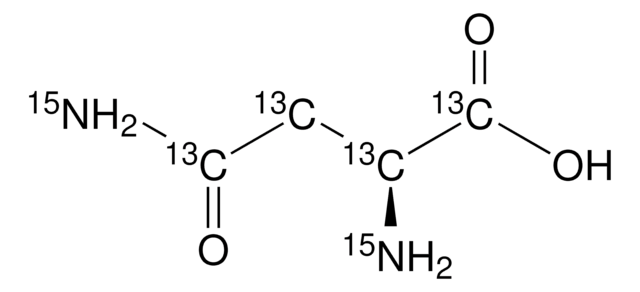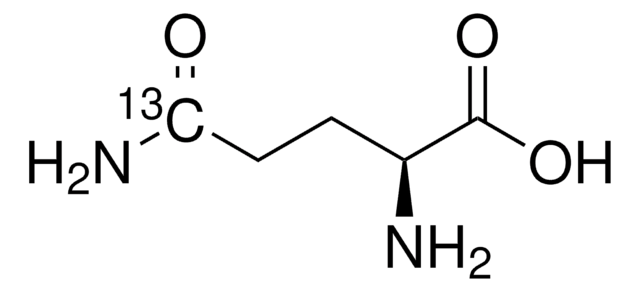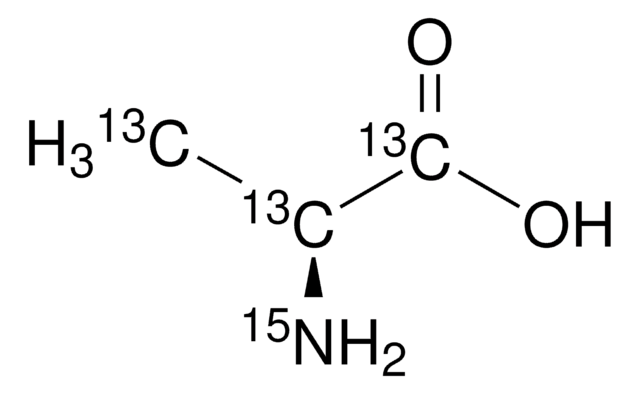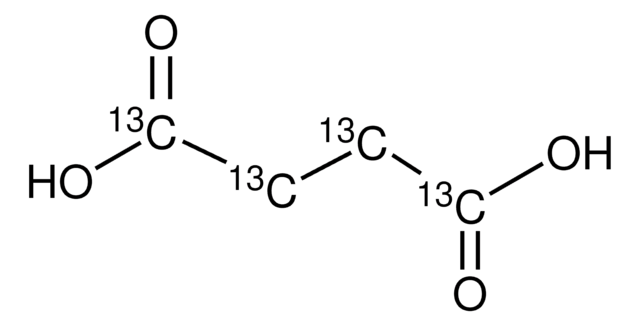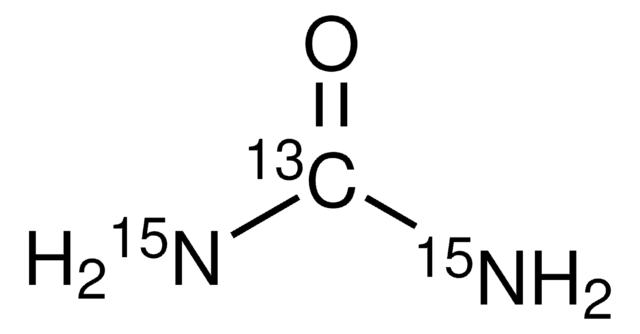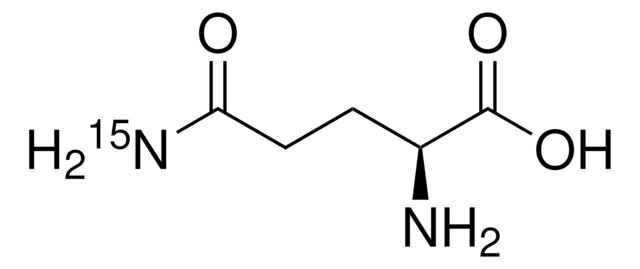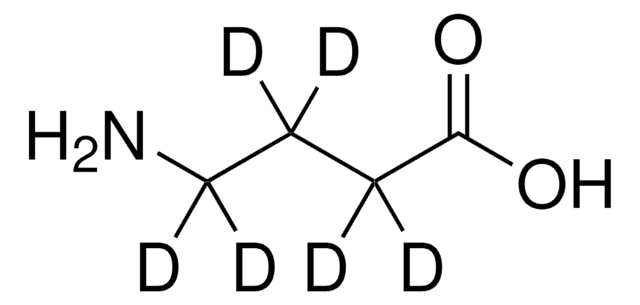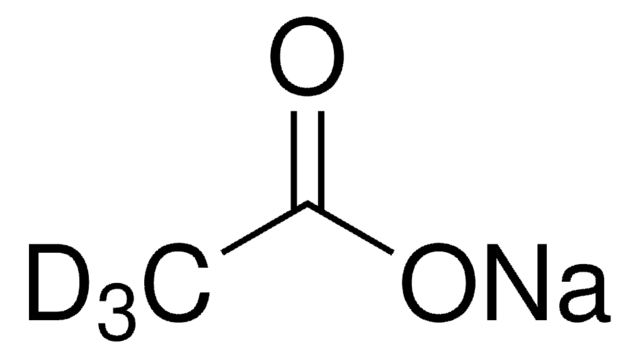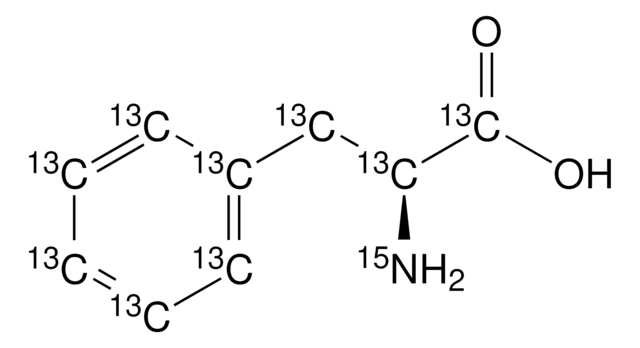607851
L-Glutamic acid-13C5,15N
98 atom % 15N, 98 atom % 13C, 95% (CP)
Sinónimos:
(S)-2-Aminopentanedioic acid-13C5,15N, 13C and 15N Labeled L-glutamic acid, Glu-13C5,15N
About This Item
Productos recomendados
isotopic purity
98 atom % 13C
98 atom % 15N
Quality Level
assay
95% (CP)
form
solid
optical activity
[α]25/D +31.0°, c = 2 in 5 M HCl
technique(s)
bio NMR: suitable
mp
205 °C (dec.) (lit.)
mass shift
M+6
SMILES string
[15NH2][13C@@H]([13CH2][13CH2][13C](O)=O)[13C](O)=O
InChI
1S/C5H9NO4/c6-3(5(9)10)1-2-4(7)8/h3H,1-2,6H2,(H,7,8)(H,9,10)/t3-/m0/s1/i1+1,2+1,3+1,4+1,5+1,6+1
InChI key
WHUUTDBJXJRKMK-UFLWJPECSA-N
General description
Packaging
related product
Storage Class
11 - Combustible Solids
wgk_germany
WGK 3
flash_point_f
Not applicable
flash_point_c
Not applicable
Elija entre una de las versiones más recientes:
¿Ya tiene este producto?
Encuentre la documentación para los productos que ha comprado recientemente en la Biblioteca de documentos.
Los clientes también vieron
Nuestro equipo de científicos tiene experiencia en todas las áreas de investigación: Ciencias de la vida, Ciencia de los materiales, Síntesis química, Cromatografía, Analítica y muchas otras.
Póngase en contacto con el Servicio técnico